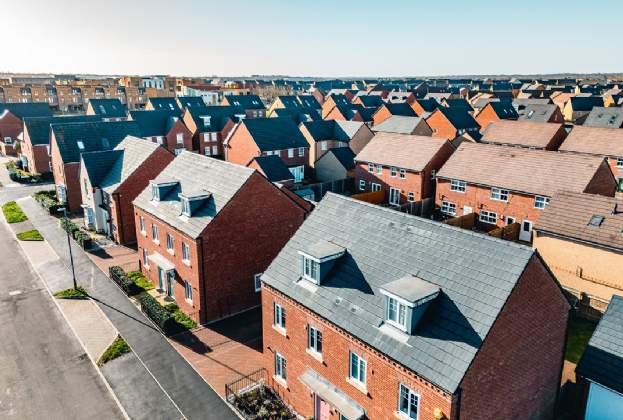The Government has set out plans for stricter energy requirements for new homes and from 2025 the Future Homes Standard will come into effect. An interim uplift to Part L standards will apply from June 2022.
The changes will create an opportunity for the sector to be at the forefront of the green agenda, but with only four years to 2025 it will need to innovate fast. Pressure to prepare supply chains, address the skills gap and develop new technologies to adhere to the stricter energy efficiency requirements for new homes will all need to be considered.
Additionally, the resulting higher build costs will need to be accounted for which may put pressure on land values.
No new homes built with gas boilers from 2025
The Future Homes Standard will require a 75-80 per cent reduction of carbon emissions in new homes from 2025 compared with current standards. As part of the standard, new homes are to be future-proofed so that they don’t require subsequent retrofitting as the electricity grid decarbonises.
The Government has also committed to banning gas boilers in new homes from 2025. Heat pumps are predicted to become the main source of low carbon heating for new homes, tying in with the Government ambition of installing 600,000 heat pumps a year by 2028.
The promotion of a fabric first approach by the Government, targeting low-carbon heating and improvements in insulation provides the sector with greater confidence to invest in and develop new technology and supply chains.
Interim uplift from June 2022
In the short term, with much more of an immediate impact, there will be an interim uplift to Part L building regulations taking effect from June 2022. All new homes will be required to produce 31 per cent fewer carbon emissions, representing the upper end of the proposed range in the consultation.
However many housebuilders will be more focused on building to the 2025 standards and many believe that the Future Homes Standard could be introduced sooner than its proposed timeline. The changes to Part L standards are intended as an impetus to encourage the sector to prepare supply chains in advance of 2025.
Rising build costs
Estimates of additional costs required to implement the uplift to Part L standards range from £3,000 to £5,000 per unit, according to the major housebuilders and MHCLG. Build costs will differ for housebuilders as there are those who have been proactive and are already partly complying with new regulations while others are less advanced in their environmental strategies so will incur higher costs to adhere to standards.
The new regulations will apply to all housebuilders therefore these additional build costs will need to be accounted for which will result in a market adjustment. Higher build costs could create pressure around housebuilder margins as well as land values. Passing these costs on to the consumer isn’t an option for housebuilders as it would depress sales rates.
Impact on land values
Higher build costs to adhere to the Future Homes Standard are already being factored into land bids with vendors being asked to include these extra costs in their land appraisals. To mitigate pressure on margins these additional build costs may feed through into residual land values.
Supply chain capacity
To deliver government ambitions, this requires a huge step change in supply chain capacity, the development of technology and widespread training programmes. Despite a target of 600,000 heat pumps a year by 2028, there are currently a limited number of heat pump manufacturers and suppliers. The sector will need sufficient time to scale up supply chains to be able to implement the Future Homes Standard. There is a clear role for MMC to help ease pressure on supply chains and facilitate efficiencies of scale to help meet the standards.
There is also a lack of understanding of these new technologies and their ongoing maintenance requirements. Heat pumps are resource heavy and have aftercare cost implications. These contingency costs will need to be included in viability considerations and may factor into land bids.
Buyer demand
Energy efficient homes are becoming more of a key priority for buyers which could result in a boost to sales rates and values. There is increasingly a receptive audience that understand the benefits of greener homes including cost savings on fuel bills.










